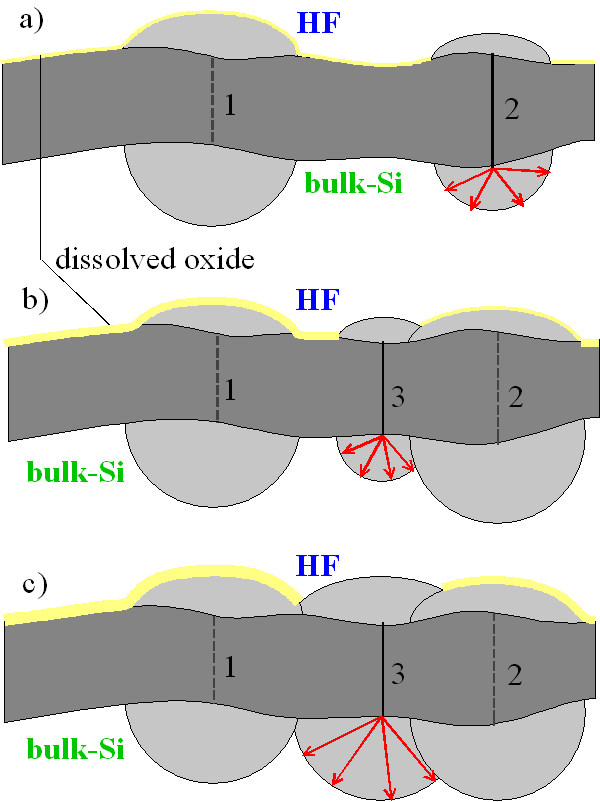 Fig. 4
Fig. 4The basic assumption for the description of the oscillations is a synchronization of in principle inhomogeneous (in time and in space) dissolution processes: The so called CURRENT BURSTS. A local ion conducting chanel opens (described by a probability function which will be discussed later), leading to a current flow and the local growth of oxide. Since each burst has a lateral expansion in the order of it's thickness, i.e. the oxide layer thickness, ther may occure an overlapping of neighboring current bursts. The probability For such an overlap increases with
Overlapping of two current bursts leads to a synchronization of currrent bursts in time, since the first current burst help the second current burst to produce oxide. The second current burst will therefore stop earlier and the time difference between the start of the first burst and the end of the last burst is therefore reduced as schematically illustrated in the following image
 |
 |